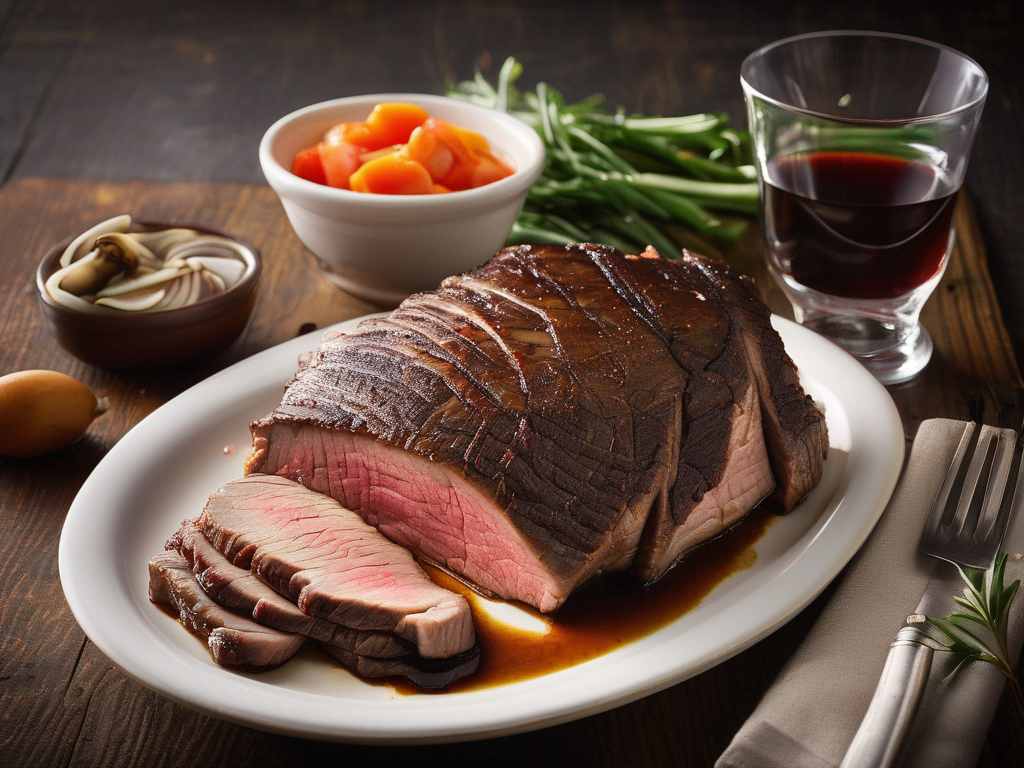
Signs that Cooked Beef Brisket Has Gone Bad
Get Your Free Food Safety Cheat Sheet
30 most common foods with instant answers. Print it and stick it on your fridge—completely free!
Signs that Cooked Beef Brisket Has Gone Bad
Beef brisket is a popular cut of meat known for its rich flavor and tender texture when cooked properly. However, like all perishable foods, cooked beef brisket can spoil if not stored or handled correctly. It's essential to be able to recognize the signs that cooked beef brisket has gone bad to prevent foodborne illnesses. In this blog post, we will discuss the key indicators that your cooked beef brisket may have spoiled and should not be consumed. (Cooked beef brisket)
How to Store Cooked Beef Brisket Properly
Before we delve into the signs of spoilage, let's first touch on the importance of proper storage to prevent your cooked beef brisket from going bad prematurely. Here are some essential tips for storing cooked beef brisket:
- Refrigeration: Store cooked beef brisket in an airtight container or wrapped tightly in foil or plastic wrap. Place it in the refrigerator within two hours of cooking.
- Temperature: Keep the refrigerator temperature at 40°F (4°C) or below to slow down bacterial growth.
- Freezing: If you don't plan to consume the cooked beef brisket within a few days, consider freezing it. Wrap it tightly in freezer-safe packaging to prevent freezer burn.
- Labeling: Always label your cooked beef brisket with the date it was cooked to track its freshness.
- Thawing: When thawing frozen cooked beef brisket, do so in the refrigerator or using the defrost setting on the microwave to avoid temperature abuse.
By following these storage guidelines, you can extend the shelf life of your cooked beef brisket and reduce the risk of spoilage.
Signs Your Cooked Beef Brisket Has Gone Bad
Appearance
- Color Changes:
- Fresh cooked beef brisket should have a vibrant, reddish-brown color. If you notice any green, gray, or yellow discoloration, it's a sign that the meat has started to spoil.
- Texture Changes:
- Spoiled beef brisket may feel slimy or sticky to the touch. Any significant changes in texture, such as mushiness or toughness, indicate spoilage.
Smell
- Unpleasant Odor:
- Fresh cooked beef brisket should have a savory, meaty aroma. If you detect a sour, rotten, or ammonia-like smell, it's a clear sign that the meat has gone bad.
Taste
- Off Flavors:
- When tasting cooked beef brisket, any unusual or off flavors, such as bitterness or sourness, indicate spoilage. Trust your taste buds and discard the meat if it tastes off.
Other Indicators
- Mold Growth:
- Visible mold growth on the surface of cooked beef brisket is a sure sign of spoilage. Mold can produce toxins that are harmful if consumed.
- Packaging Integrity:
- If the packaging of the cooked beef brisket is damaged, torn, or compromised in any way, it increases the risk of contamination and spoilage.
Safety Tips for Handling Spoiled Cooked Beef Brisket
If you suspect that your cooked beef brisket has gone bad based on the signs mentioned above, it's crucial to handle it properly to avoid foodborne illnesses:
- Do not taste spoiled meat. Consuming spoiled meat can lead to food poisoning.
- Discard the meat promptly. Wrap the spoiled cooked beef brisket in a sealed bag before disposing of it to contain any potential contaminants.
- Clean and sanitize surfaces. Thoroughly clean any utensils, cutting boards, or surfaces that came into contact with the spoiled meat to prevent cross-contamination.
Conclusion
Being able to recognize the signs that cooked beef brisket has gone bad is essential for maintaining food safety in your kitchen. By following proper storage practices, regularly inspecting the appearance, smell, and taste of cooked beef brisket, and knowing how to handle spoiled meat safely, you can reduce the risk of foodborne illnesses. Remember, when in doubt, it's always better to err on the side of caution and discard spoiled meat to protect your health and well-being.
For more information on cooking and storing beef brisket, check out our guide on [cooked beef brisket](/food/cooked beef brisket). Stay safe and enjoy your meals responsibly! (Cooked beef brisket)
Authoritative Food Safety References
These agencies and university labs inform every tip and health precaution we publish.
USDA FoodKeeper – Cold Storage Guidelines
Official refrigerator, freezer, and pantry timelines maintained by the U.S. Department of Agriculture.
Visit USDA FoodKeeperFDA Produce Safety Rule & Grower Guidance
Field-to-fridge handling practices that prevent contamination of fruits, vegetables, and leafy greens.
Visit FDA Produce SafetyCDC Foodborne Illness Prevention Hub
Surveillance-backed guidance on pathogens, symptoms, and steps to reduce foodborne illness risk.
Visit CDC Food SafetyUC Davis Postharvest Technology Center
University research detailing optimal storage atmospheres for produce after harvest.
Visit UC Davis PostharvestPenn State Extension – Home Food Preservation & Safety
Peer-reviewed extension bulletins on safe canning, chilling, and reheating practices.
Visit Penn State ExtensionGet Your Free Food Safety Cheat Sheet
30 most common foods with instant answers. Print it and stick it on your fridge—completely free! Want more? Upgrade to the complete guide with 70+ foods.
Scan your food directly and get instant safety info using our AI-powered camera feature.